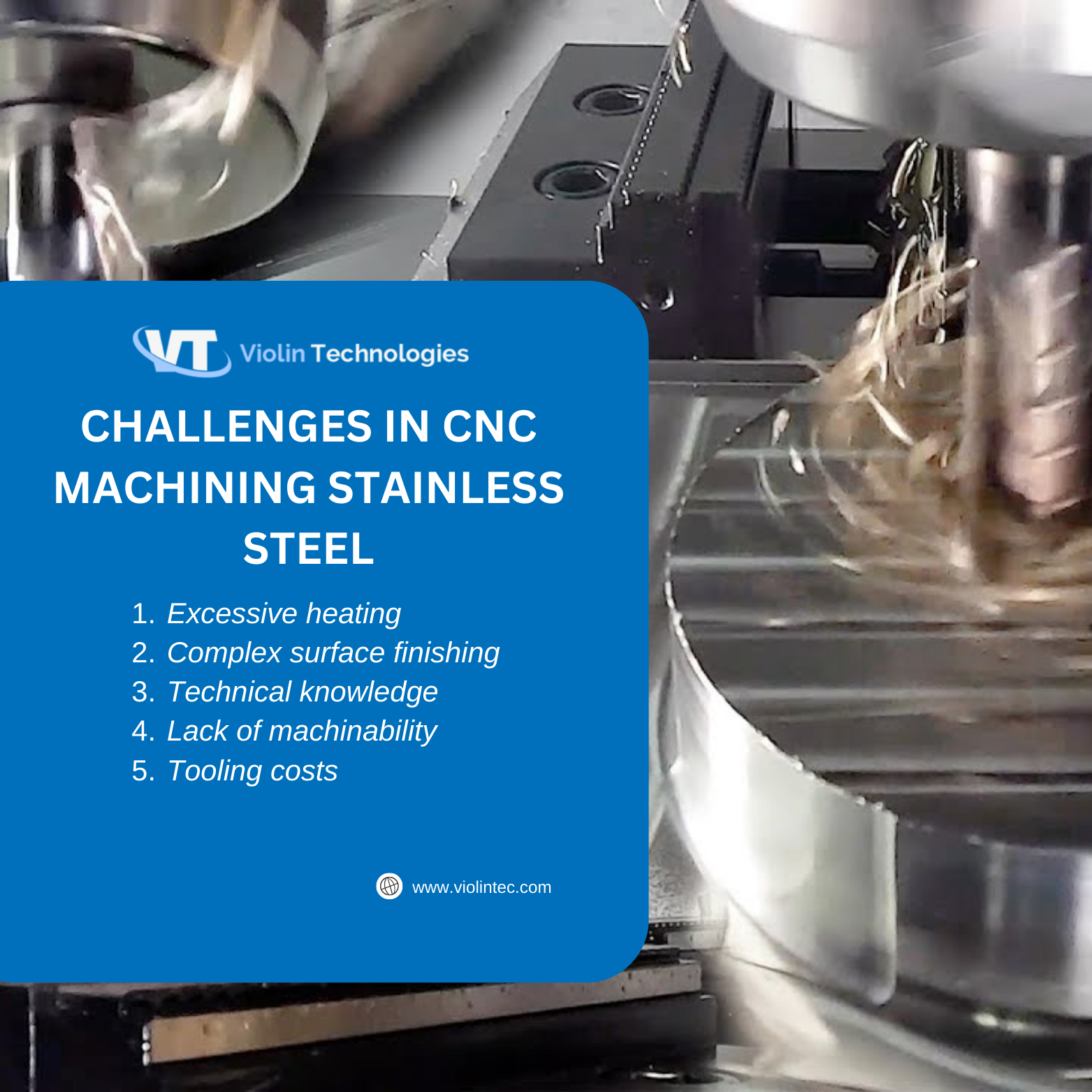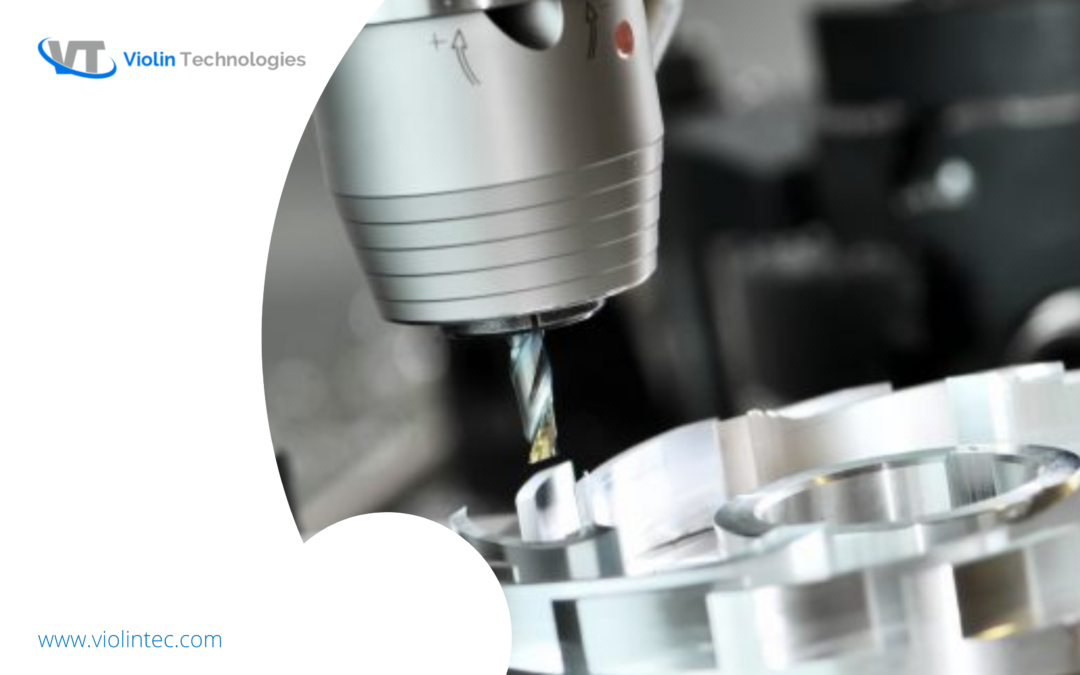Stainless steel is one of the metals utilized for CNC machining due to its great versatility. It is used in a variety of sectors, including automotive, consumer, medical, and aerospace. The flexibility of stainless steel stems from its multiple features, which range from good corrosion resistance to durability.
However, not all stainless steels are simple to manufacture. When CNC machining stainless steel, one may encounter some challenges. In this post, you will learn about the challenges associated with CNC machining stainless steel and also the tips to overcome them that will enhance the machining process.
Why Do CNC Machining Projects Use Stainless Steel?
Stainless steel is a great CNC machining material for producing durable and long-lasting products. Here are some of the benefits of using stainless steel for the CNC process.
1. Extremely High Tensile Strength
Stainless steel has greater tensile strength than mild steel, brass, and certain aluminum alloys. Tensile strength is the amount of tension necessary to stretch a material to its breaking point. This is a key attribute for many items throughout their useful lifespan, especially for sections that will be bent and rolled a lot.
2. Cryogenic Tolerance
Some stainless steel grades remain stable at a variety of temperatures. Austenitic steels, for example, have exceptional hardness and tensile strength at temperatures below zero. It is crucial to note, however, that not all machining-grade stainless steel has this property.
3. Resistance to Corrosion
Stainless steel possesses good corrosion resistance and can tolerate stains and rust. Because of its property to resist corrosion, stainless steel is appropriate for a variety of outdoor and indoor applications, including temperature and pressure extremes. This property of stainless steel is due to chromium in the metal, which creates a thin coating to protect the steel when it comes into contact with oxygen.
4. Physical appearance
Stainless steel components often require a superior surface finish for both aesthetic and functional reasons. Machining operations should be carefully planned to minimize tool deflection and achieve a smooth surface finish. Consideration of cutting speed and tool breakage is essential to prevent imperfections in the final product.
The Contract Manufacturing Company in Chennai has the expertise to CNC machine stainless steel, providing it with a sleek and contemporary look while preserving its functionality.

Challenges In CNC Machining Stainless Steel
Stainless steel alloys are in the middle between titanium and aluminum with respect to strength, machinability, hardness, and temperature resistance. However, there are some challenges. Here are some of the difficulties associated with machining custom stainless steel components.
1. Excessive Heating
Stainless steel, unlike many other forms of steel and metals, has low thermal conductivity. It means the heat generated during the machining process does not efficiently dissipate. Working with stainless steel, on the other hand, causes it to heat up quickly, which can affect both the stainless steel and the tools and CNC machines used in the process.
2. Complicated Surface Finish
It is challenging to select the proper surface finish for stainless steel CNC machined parts. The reason for this is that, unlike other metals, surface finishing stainless steel affects more than just its appearance. It also influences other attributes, including corrosion resistance, electrical properties, impact resistance, and weldability.
3. Technical Knowledge
Working with stainless steel necessitates technical knowledge and care. The reason for this is that machining stainless steel is difficult because using the improper cutting tool or speed might harm the material. Because of this difficulty, machining stainless steel is extremely arduous and slow.
4. Lack of Machinability
Stainless steel is significantly more difficult to process than other metals. Furthermore, because it hardens so rapidly, it is difficult to work with, adding to its low machinability grade. As a result, machining stainless steel would necessitate the use of specialist equipment.
5. Tooling costs
High-performance cutting tools designed for machining stainless steel can be costlier than the ones used for softer materials. The cost of tooling is a crucial consideration in the overall economics of machining stainless steel parts. Machining stainless steel can result in accelerated tool wear due to the abrasiveness of the material and high hardness. This may require more frequent tool changes, resulting in increased production costs and downtime.
Tips for Stainless Steel CNC Machining
When CNC machining stainless steel, there are various hurdles, but there are solutions to avoid these problems and ensure smooth cutting. Here are a few pointers for CNC cutting this metal.
1. Selecting Special End Mills and Drills
It is ideal to utilize high-quality tools, such as tungsten HSS end mills and drills. They can resist the force of the procedure with minimum wear when cutting stainless steel. These tools also help to enhance the surface quality. Avoid utilizing tools that are prone to wear since this may limit machining speed while raising manufacturing costs.
2. Control Heat Production
Stainless steel often undergoes aging and heat treatments to enhance its mechanical properties. Heat treatment is a critical aspect of CNC machining stainless steel, influencing the material’s hardness and strength. Understanding the heat treatment requirements of the specific stainless steel alloy being machined is crucial for attaining the desired mechanical properties in the finished product.
3. Use Pecking and chip-breaking cycles
One method for controlling chip formation is to use pecking and chip-breaking cycles during milling. This helps to eliminate lengthy, stringy chips. Another technique to manage chip formation is to inspect tools often since worn cutting tools generate more chips.
4. Prevent Deformation of Your Workpiece
A workpiece material can be deformed by a variety of factors, including speed and feed rate, as well as cutting tool material. Using a worn cutting tool increases breakage, resulting in out-of-tolerance and deformed components. This is why it is critical to use the proper speed and feed rate when machining stainless steel.
Achieving satisfactory stainless steel machining demands a high level of expertise, making it advisable to entrust the task to contract manufacturers.
Applications In Various Industries
The distinctive properties of stainless steel make it suitable for a diverse range of applications.
- Aerospace Industry: To manufacture precision parts like turbine blades, brackets, and structural components from stainless steel for its high strength, corrosion, and heat resistance.
- Electronics: Stainless steel is used for CNC-machined enclosures and housings to provide robust protection for electronic components in challenging environments.
- Marine Industry: CNC machining is utilized to create various stainless steel components for marine applications, such as fittings, propellers, and shafts, due to its resistance to saltwater corrosion and resistance to stress corrosion cracking.
- Oil and Gas Industry: To create high-quality stainless steel valves and fittings for the oil and gas industry, where corrosion and wear resistance are crucial.
- Heat Exchangers: Stainless steel’s corrosion resistance makes it a preferred material for heat exchangers and piping systems. CNC machining guarantees tight tolerances and high-quality finishes, ensuring the efficiency and longevity of these components.
- Aircraft Fittings and Automotive Parts: CNC machining is widely employed in the production of aircraft fittings and automotive components. The corrosion resistance property of stainless steel makes it ideal for withstanding harsh environmental conditions in these applications.
Conclusion
CNC machining stainless steel involves overcoming challenges related to material hardness, corrosion resistance, and tool wear. By understanding the specific requirements of the stainless steel alloys and stainless steel grades, selecting appropriate cutting tools, and optimizing machining parameters, manufacturers can produce high-quality components for a diverse range of applications. As industries continue to demand durable material with high corrosion resistance, CNC machining stainless steel remains a vital process for achieving precision and reliability in manufacturing.

Amulya Sukrutha
About the Author
Amulya Sukrutha, passionate computer science engineer specialized in Data science field. I also describe myself as a enthusiastic strength and endurance trainee. I have played professional Tennis during my early years and found my path in Software development and machine learning later. I’m also passionate about creating content, and learning about new technologies.

